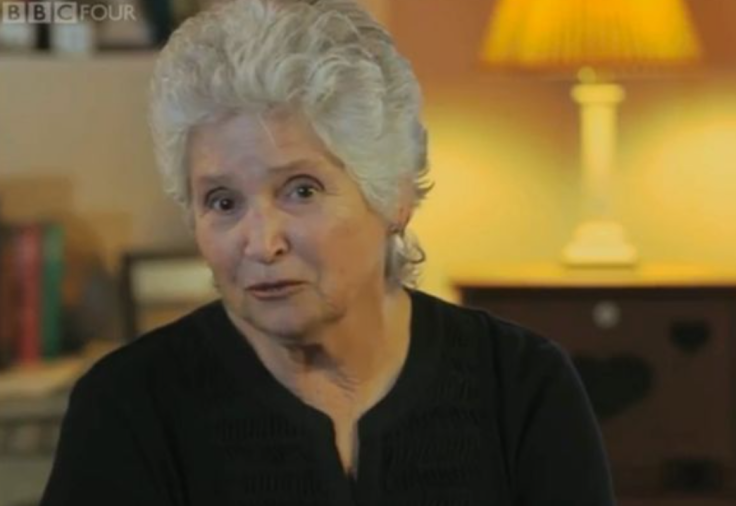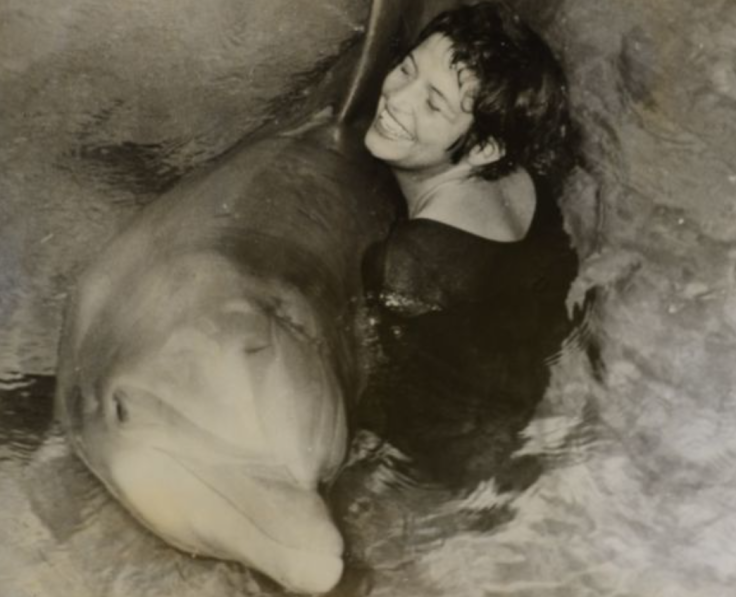A young woman had a relationship with a "naughty" dolphin who later drowned himself to death when their affair came to an end.
Nearly 50 years ago, young researcher Margaret Howe Lovatt charmed project director Gregory Bateson into letting her become a part of a NASA-funded project to try to teach dolphins to learn how to speak.
Margaret, just 20, talked her way into letting her work with the three dolphins, which neuroscientist John Lilly was keeping on the Caribbean island of St Thomas.
Given that dolphins have brains that are at least as large as humans, the idea was that we could develop techniques for communicating with extraterrestrials by decoding how the intelligent species "talk" to each other.
"You are talking about a time in science when everybody’s thinking about a correlation between brain size and what the brain can do. And in this period, researchers were like: 'Whoa… big brain huh… cool!'", said Graham Burnett, professor of the history of science at Princeton and author of The Sounding of the Whale.
The dolphins were named Peter, Pamela, and Sissy.
"Sissy was the biggest," Lovatt later said.
"Pushy, loud, she sort of ran the show. Pamela was very shy and fearful. And Peter was a young guy. He was sexually coming of age and a bit naughty."
Lovatt began spending as much time as possible with the dolphins and carrying out a program of daily lessons to encourage them to make human-like sounds.
Peter and Lovatt developed a rare and unique bond. He reportedly got jealous if she spent too much time with the other dolphins and Lovatt said the feeling was, at least to an extent, mutual.
"I chose to work with Peter because he had not had any human-like sound training and the other two had," Lovatt explains.
"That relationship of having to be together sort of turned into really enjoying being together, and wanting to be together, and missing him when he wasn’t there," she told the BBC.

Lovatt and Peter would reportedly attempt to live in isolation for six days a week. She slept on a makeshift bed in the middle of the room and did her paperwork on a desk suspended from the ceiling and hanging over the water.
On the seventh day, Peter would return to the sea pool to spend time with the two female dolphins at the lab.
"Human people were out there having dinner or whatever and here I am. There’s moonlight reflecting on the water, this fin and this bright eye looking at you and I thought: ‘Wow, why am I here?’ But then you get back into it and it never occurred to me not to do it. What I was doing there was trying to find out what Peter was doing there and what we could do together. That was the whole point and nobody had done that," Lovatt said.
Lovatt said she repeatedly encouraged Peter to greet her with the phrase ‘Hello Margaret’. However, she remembers that “‘M’ was very difficult,” for him.
"My name. Hello ‘M’argaret. I worked on the ‘M’ sound and he eventually rolled over to bubble it through the water. That ‘M’, he worked on so hard," she said.
"Peter liked to be with me," explains Lovatt. "He would rub himself on my knee, or my foot, or my hand."

"I allowed that," she says. "I wasn’t uncomfortable with it, as long as it wasn’t rough. It would just become part of what was going on, like an itch – just get rid of it, scratch it and move on. And that’s how it seemed to work out. It wasn’t private. People could observe it."
"It wasn’t sexual on my part. Sensuous perhaps. It seemed to me that it made the bond closer. Not because of the sexual activity, but because of the lack of having to keep breaking. And that’s really all it was. I was there to get to know Peter. That was part of Peter," Lovatt recalled.
Just as their six-month live-in experiment was concluding, it was announced that the funding was cut and the lab would be closed.
"I couldn’t keep Peter," Lovatt said wistfully. "If he’d been a cat or a dog, then maybe. But not a dolphin."
The dolphins were shipped away to Lilly’s other lab, in a disused bank building in Miami, where they were far away from the relative freedom and comfortable surroundings of Dolphin House.
At the Miami lab, Peter, who was held captive in a small tank with little or no sunlight, quickly deteriorated.
After a few weeks, John Lilly himself called Lovatt to tell her that "Peter had committed suicide."
Ric O’Barry from animal rights organization 'The Dolphin Project' explained: "Dolphins are not automatic air-breathers like we are."
"Every breath is a conscious effort. If life becomes too unbearable, the dolphins just take a breath and they sink to the bottom. They don’t take the next breath."
Lovatt said she "wasn’t terribly unhappy about it."
"I was more unhappy about him being in those conditions [at the Miami lab] than not being at all. Nobody was going to bother Peter, he wasn’t going to hurt, he wasn’t going to be unhappy, he was just gone. And that was OK. Odd, but that’s how it was."
No one else ever tried to teach dolphins to speak English again.

© 2025 Latin Times. All rights reserved. Do not reproduce without permission.




